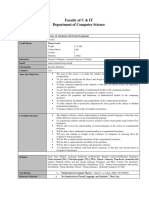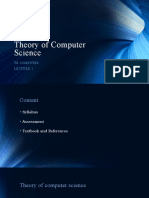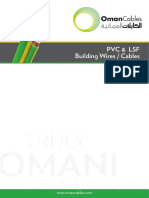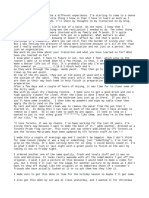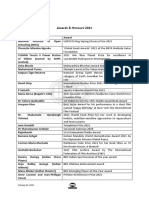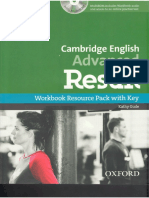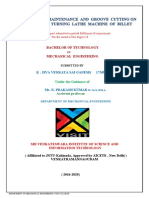Adventist University of the Philippines
COLLEGE OF SCIENCE AND TECHNOLOGY
COMPUTER STUDIES DEPARTMENT
Course Syllabus in Automata and Language Theory
FIRST SEMESTER, COLLEGIATE YEAR 2013-2014
I.
GENERAL INFORMATION ABOUT THE UNIVERSITY
PHILOSOPHY
The work of education and the work of redemption are one: to restore in man the lost image of his Maker through the
harmonious development of his mental, physical, social, and spiritual faculties.
MISSION
The Adventist University of the Philippines exists to provide quality Christian education that facilitates the growth of
students so that they may lead lives that are personally satisfying and may contribute to the welfare of the church and the
society that sustain them.
VISION
As a Bible-based institution of higher learning, the Adventist University of the Philippines envisions to become a world-
class center of academic and Christian excellence.
II.
INFORMATION ABOUT THE COURSE
COURSE TITLE Automata and Language Theory
COURSE CODE CSTH 312
CREDIT UNITS Three (3)
Course Syllabus in Automata and Language Theory | First Semester, cy 2013-2014
PRE-REQUISITE Data Structures (CSPR123), Discrete Structures (CSTH211)
LECTURE SCHEDULE Tuesday and Thursday, 10:00am to 11:30am
ROOM CS Room
COURSE DESCRIPTION
This course introduces the formal models of computing and their relation to formal languages. Topics to be discussed in
the course includes Deterministic Finite Automata (FA), Nondeterministic Finite Automata (NFA), Regular Expressions
(RE), Context-Free Grammar (CFG), Turing Machines, and Complexity
COURSE GOALS
Upon completion of this course, the students should be able to:
Understand the principal models of computation such as finite automata, pushdown automata and Turing
machines.
Prove that a language is in a specified class and that it is not in the next lower class.
Convert among equivalently powerful notations for a language, including among DFAs, NFAs, and regular
expressions, and between PDAs and CFGs.
Explain at least one algorithm for both top-down and bottom-up parsing.
2
Learn how to interpret and create Regular Expressions.
�
Apply the Concepts of Automata Theory in Computers.
Know the importance of following instructions.
Know how to solve big problems by breaking it down to smaller ones.
Know the importance of speed and accuracy.
COURSE REQUIREMENTS
The student’s main responsibility is to come to class prepared.
He/she is expected to take all the tests and examinations on scheduled dates.
He/she should do the assigned materials and problems prior to class.
He/she must attend each class and participate actively in the discussions.
He/she must complete and submit on-time all class requirements.
GRADING CRITERIA
Preliminary Grade (25%)
Quiz 30%
CW/Assignment 20%
Research 10%
Exam 40% 100%
Midterm Grade (25%)
Quiz 40%
CW/Assignment 20%
Exam 40% 100%
Course Syllabus in Automata and Language Theory | First Semester, cy 2013-2014
Pre-Final Grade (25%)
Quiz 40%
CW/Assignment 20%
Exam 40% 100%
Final Grade (25%)
Quiz 40%
CW/Assignment 20%
Exam 40% 100%
GRADING SYSTEM
A 98 – 100 4.00
A– 95 – 97 3.75
B+ 92 – 94 3.50
B 89 – 91 3.25
B– 86 – 88 3.00
C+ 83 – 85 2.75
C 80 – 82 2.50
C– 77 – 79 2.25 3
�D 75 – 76 2.00
F 74 and below 0.00
INC (Incomplete). A temporary grade given to students who failed to complete the course due to illness, emergencies,
failure to submit class requirements, inability to take examinations or no financial permit during the examinations.
NC (No Credit). A permanent grade that can be requested by a student if, based on self-assessment, he/she will not be
able to pass the course. A “Petition for an NC Grade” form is required to be submitted and approved, two weeks
before the final examination.
COMPUTATION OF GRADE [ Raw Score ÷ Perfect Score ] x 50% + 50%
CUT-OFF GRADE C+ [ 83% – 85% ]
Course Syllabus in Automata and Language Theory | First Semester, cy 2013-2014
4
� REFERENCES
Hopcroft, John E., Rajeev Motwani, and Jeffrey D. Ullman. Introduction to Automata Theory, Languages, and
Computation. Singapore: Pearson Education Asia Pte Ltd, 2001
Turing, A., "On Computable Numbers, With an Application to the Entscheidungsproblem", Proceedings of the
London Mathematical Soceity, Series 2, Volume 42, 1936; reprinted in M. David (ed.), The
Undecidable, Hewlett, NY: Raven Press, 1965
Boolos, G. and Jeffrey, R., Computability and Logic, 2nd ed., Cambridge: Cambridge University Press, 1980.
Putnam, H., "The Nature of Mental States", in Mind, Language and Reality: Philosophical Papers II, Cambridge:
Cambridge University Press, 1975
P. Anumula et al, “Introduction to theoretical Computer science/Theory of Computation,” http://www.cs.odu.edu/
~toida/nerzic/390teched/regular/fa/intr_2_fa.html
T. Altenkirch, “Pushdown Automata,” cited 05-08-2001; http://www.cs.nott.ac.uk/~txa/g51mal.2001/notes/ node29.html
D. Weir, “Automata theory,” edited 05,05,2000; http://www.kornai.com/MatLing/aut.html Palmer, M., & Walters,
M. (2006). Guide to operating systems: enhanced edition. Boston: Thomson Course Technology.
III.
COURSE CONTENT
HOU METHODOL EVALUATI VALUES
TOPICS SPECIFIC OBJECTIVES
RS OGY ON INTEGRATION
1.5
Orientation
Course Syllabus in Automata and Language Theory | First Semester, cy 2013-2014
1 Introduction COGNITIVE
Lecture
Exercise
Creationism
Why study automata theory?
Understand topic
Discussio s
n
AFFECTIVE
Use principles in similar life
scenarios
PSYCHOMOTOR
none
1 Introduction to formal proof COGNITIVE
Lecture
Exercise
More logical
Understand proofs
Discussio s thinking
n
AFFECTIVE
Use principles in similar life
scenarios
PSYCHOMOTOR
none
4.5 Central Concepts of Automata COGNITIVE
Lecture
Exercise
theory
Understand concepts
Discussio s
n
AFFECTIVE
Use principles in similar life
scenarios
PSYCHOMOTOR
none 6
�0.5 Alphabet
Lecture
Exercise
Discussio s
n
6
�0.5 Strings
Lecture
Exercise
Discussio s
n
0.5 Languages
Lecture
Exercise
Discussio s
n
1 Problems
Lecture
Exercise
Discussio s
n
Finite Automata COGNITIVE
Lecture
Exercise
Human
Understand DFA/NFA/Regex
Discussio s States
n
AFFECTIVE
Use principles in similar life
scenarios
PSYCHOMOTOR
none
6 Deterministic Finite Automata
Lecture
Exercise
Basic Concepts
Discussio s
n
4.5 Nondeterministic Finite
Lecture
Exercise
Automata
Discussio s
n
3 Regular Expressions
Lecture
Exercise
Discussio s
n
6 Context-Free Grammar COGNITIVE
Lecture
Exercise
Understand CFG
Discussio s
n
AFFECTIVE
Use principles in similar life
scenarios
Course Syllabus in Automata and Language Theory | First Semester, cy 2013-2014
PSYCHOMOTOR
none
Pushdown Automata COGNITIVE
Lecture
Exercise
Understand PDA
Discussio s
n
AFFECTIVE
Use principles in similar life
scenarios
PSYCHOMOTOR
none
1.5 Definition of Pushdown Automata
3 The Language of a PDA
Lecture
Exercise
Discussio s
n
3 Equivalence of PDA’s and CFG’s
Lecture
Exercise
Discussio s
n
Introduction to Turing
Lecture
The
Machines
Discussio complexity
n of the mind
6
�1.5 Problems that Computers Cannot COGNITIVE
Lecture
Exercise
Solve
Understand topic
Discussio s
n
AFFECTIVE
Use principles in similar life
scenarios
PSYCHOMOTOR
none
3 The Turing Machines
Lecture
Exercise
Discussio s
n
3 Programming Techniques for
Lecture
Exercise
Turing Machines
Discussio s
n
Course Syllabus in Automata and Language Theory | First Semester, cy 2013-2014
7
�IV.
INFORMATION ABOUT THE TEACHER
NAME Winelfred G. Pasamba
CONTACT NUMBER (0916) 318 7253
E-MAIL ADDRESS winelfredpasamba@gmail.com
CONSULTATION HOURS Tuesday and Thursday 4:00pm-5:30pm / AOLIS Office
Prepared by: Approved by: Noted by:
WINELFRED G. PASAMBA ABNER M. CRUZ EDWIN A. BALILA, PhD
Instructor Department Chair College Dean
Course Syllabus in Automata and Language Theory | First Semester, cy 2013-2014


























